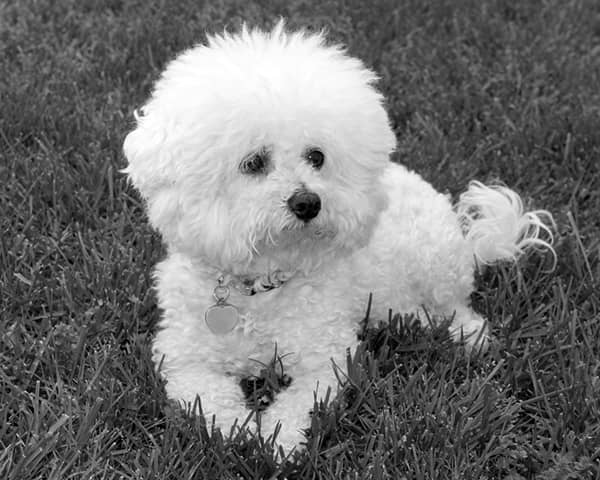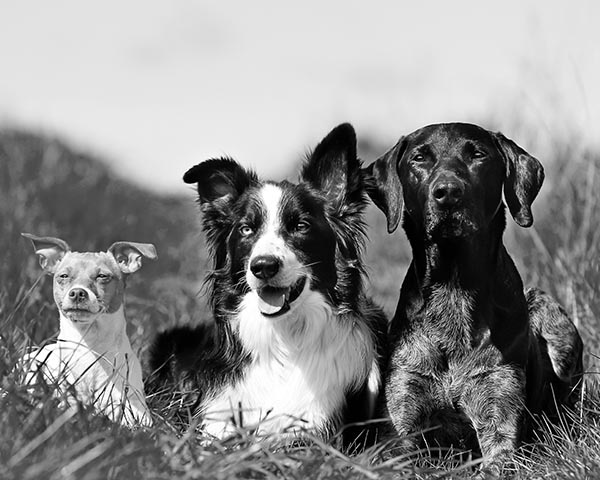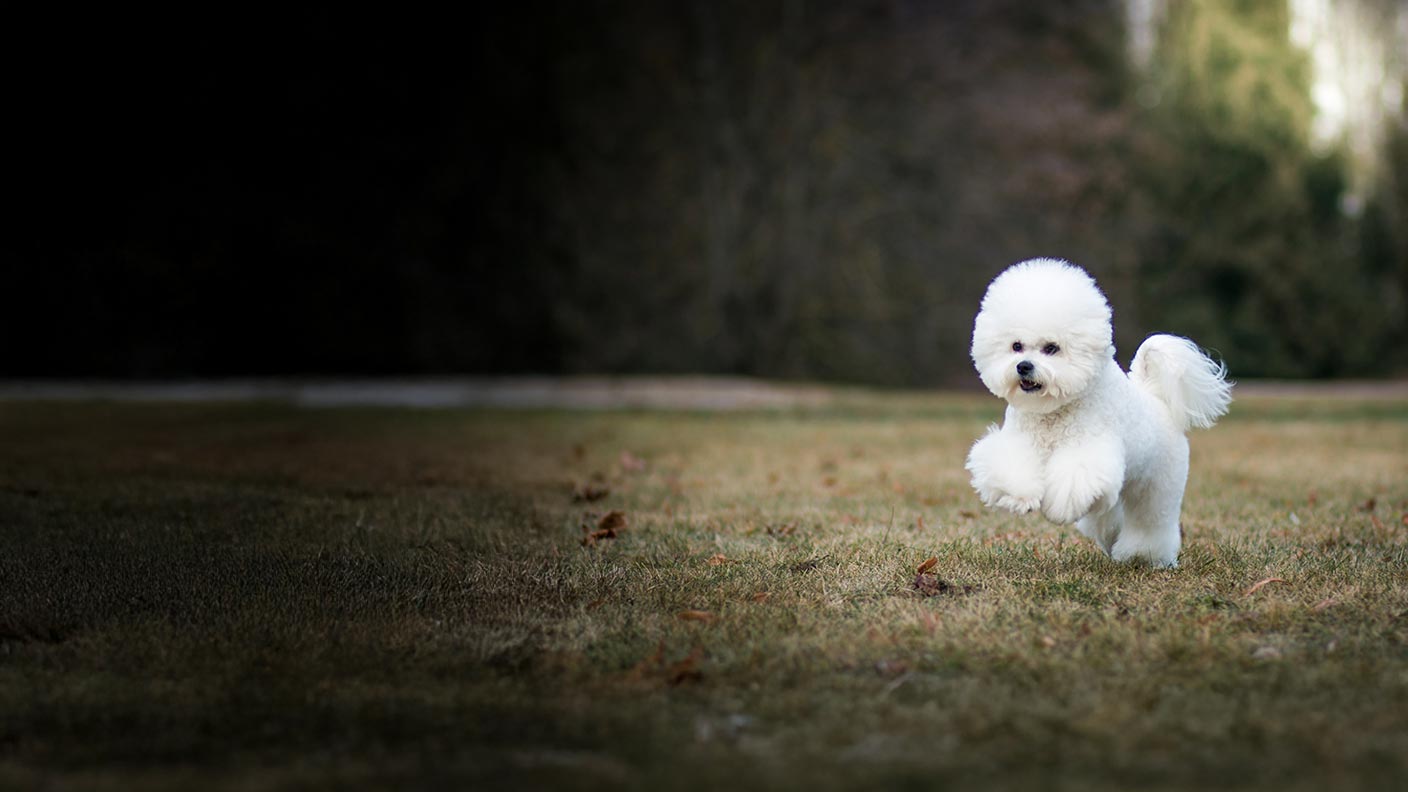Bichon Frise dog breed information and advice
Considering welcoming a friendly, playful Bichon Frise into your life? Caring for any dog is a big commitment, so it’s important that you’ve done your research on different breeds before you choose a Bichon Frise.
This guide contains everything you need to know about Bichon Frises. Find out if they’re an easy breed to train, how much exercise they need and how often they need grooming.
Bichon Frise facts

| Lifespan | 12 - 15 years |
| How much | £500 - £2,500 |
| Size | 23 - 28 cm |
| Weight | 3 - 6 kg |
| Colours | white, cream, apricot |
| Grooming | brush two to three times a week and monthly haircuts |
| Temperament | affectionate, playful, intelligent |
| Exercise | 30 minutes per day |
Insurance for your Bichon Frise
Illness and injuries can happen at any age and treatment can be expensive. If you take out dog insurance for your Bichon Frise, this can help cover the cost of vet bills for surgery for and medication. This means you can afford to give your dog the care that it needs.
As with many pedigree breeds, Bichon Frise are more susceptible to developing certain health conditions. Common health problems in this breed include:
Sainsbury’s Bank Pet Insurance
Sainsbury’s Bank Pet Insurance can protect your Bichon Frise puppy from eight weeks old.
With Sainsbury’s Bank you can find a level of pet insurance that suits you, your Bichon Frise and your budget. Choose from:
- Lifetime – full cover with access of up to £10,000 towards vet costs each year.
- Maximum benefit – cover for accidents, conditions and illnesses of up to £6,000.
- Time limited – cover vet costs for your pet’s short-term health issues of up to £3,000, or for 12 months.
If you have more than one pet, you can get a discount with our Multi-pet insurance.
Please note that we won't cover any pre-existing conditions and that terms, conditions, excesses, exclusions and limitations apply.
How to care for a Bichon Frise
Bichon Frises are not big eaters, but they are high maintenance when it comes to grooming. They don’t need much exercise, but they do love to socialise and play. Find out how to care for your Bichon dog so they have a healthy, happy life.
Feeding and nutrition
Some Bichon Frises are picky eaters, so it’s best to stick to food they like, as they might turn their noses up otherwise. Changing dog food can also upset their tummies, especially if it’s done quickly. Make sure the food you choose contains the nutrients needed for your dog. Ask your vet if you are unsure.
It's better to feed Bichon Frise puppies smaller meals more often, rather than one meal a day. Feed a puppy three to four times a day and as they get older move to twice a day. You’ll find guidelines on how much you should feed your Bichon Frise on the back of the food packaging.
Grooming
The Bichon Frise coat is perfect for fancy haircuts, but unfortunately those tight curls are prone to matting. You’ll need to brush your dog two to three times a week to keep their coat knot-free and healthy.
The Bichon Frise coat is thick and dense, so it will need washing every one to two weeks. Find a groomer your pooch is comfortable with and book them in for regular haircuts to keep their coat clean and healthy. Some people like the circular facial cut, but it’s up to you what style you want to go for.
Exercise
Bichon dogs aren’t big walkers, so 30 minutes to an hour of daily exercise is enough. They’re happy to accompany their owners on a stroll, and they love to play and socialise with other dogs. Teaching your dog tricks is a great way to exercise them and keep them entertained. To them, it’ll feel like they’re playing a game. It’s easier to train puppies, but even an old dog can learn new tricks.
Training
Bichon Frises are intelligent and want to please their owner, making them easy to train. But they can be stubborn and difficult when it comes to house training. You’ll need to be patient and dedicated, especially when toilet training a puppy.
Dogs naturally prefer to do their business on soft surfaces outside, like grass or soil. Take them out for toilet breaks regularly when they’re puppies, so they’re less likely to have accidents in the house.
Temperament and behaviour
Bichon Frises are friendly, intelligent and playful dogs. They’re good with children and other pets and easy to train. Bichon dogs like nothing better than spending time with their owners, and love being the centre of attention. However, this can mean Bichon dogs struggle when left alone.
Separation anxiety can cause them to bark or become destructive, so they shouldn’t be left alone for too long. Giving them toys to play with or a companion will also help.
Bichon Frises have a gentle temperament but may show signs of aggression if they’re scared. You should socialise your dog from a young age so that they learn not to fear other dogs. Puppy classes and dog walking groups are a great way to exercise and socialise your dog.
Common health problems
Some health issues linked to Bichon Frises are more common with old age. Dental problems and kidney stones are more likely to develop in older dogs. But there are other conditions that you’ll need to keep an eye out for in a younger dog.
We can’t insure pre-existing conditions, so getting your dog insured before they develop conditions can help ensure the costs are covered if they do develop them later in life.
Luxating patella
Luxating patella is an unstable kneecap that jumps out of its groove during movement. Some dogs are born with a shallow groove or a ligament that attaches to the wrong place. These dogs will develop lameness before they are a year old. It can also happen after an injury to the knee when the soft tissues are damaged.
Affected dogs will hop and have difficulty jumping. If left untreated it will lead to arthritis, causing permanent pain and lameness. Surgery is needed to give the dog a normal, active life. A deeper groove can be cut, and ligaments can be repositioned to hold the kneecap in place. Surgery is generally straight forward and usually has a good outcome.
Legg Calvé Perthes disease
This is an uncommon condition that affects toy dog breeds. The cause is unknown, but it’s an inherited condition. The problem develops due to a disrupted blood supply to the ball of the thigh bone. This results in the bone dying and collapsing, leading to osteoarthritis of the hip joint.
It can affect dogs as young as five months old. Hindlimb lameness is a sign of the condition, but x-rays are needed to confirm the diagnosis. Your dog will show signs of irritability when touched because they will be in pain.
Changes are irreversible and it’ll continue to get worse. Pain killers can be given to reduce the pain, but surgery or total hip replacement will be needed. This is expensive and has a long recovery time. Your dog will need rehabilitation therapy to strengthen the affected joints.
Periodontal disease
Periodontal disease is a dental infection that causes inflammation of the gums. It occurs when food and bacteria collect along the gum causing plaque. If this plaque is left it turns to tartar. This condition is common in older dogs.
You’ll know if your dog has periodontal disease as you’ll see a build-up of brown/yellow tartar on your dog’s teeth. They’ll also have red gums and may be unwilling to eat as it can cause discomfort. Your dog will need dental treatment to remove the tartar and any damaged teeth.
This progressive disease can be prevented by brushing your dog’s teeth daily to remove the plaque before it becomes tartar.
Frequently asked questions
What is a Bichon Frise?
Bichon Frise is a small breed of dog. The breed existed in Mediterranean countries in the 14th century but their name is French. The word ‘bichon’ means white dog, and ‘frise’ is used to describe their soft, curly coat. Bichon Frise translates to curly lap dog - a perfect description.
How long do Bichon Frises live for?
Bichon Frises have a life expectancy of 12-15 years – many years of happiness with your best friend. Their lifespan is affected by their health, so it’s important to give them the correct care. Diet, exercise, training and grooming will all affect their quality of life.
Do Bichon Frises shed?
You may be surprised to find out that Bichon Frises don’t shed. They have a lot of hair which should be brushed at least two to three times a week to keep it smooth and tangle free. Most Bichon Frise owners will take their dog to a professional groomer monthly to keep their fur trimmed.
Are Bichon Frises hypoallergenic?
No dog is fully hypoallergenic, but the Bichon Frise coat doesn’t shed, so allergy suffers are less likely to react to this breed. But you can still be allergic to a Bichon Frise as it’s the skin cells and saliva that can cause reactions.
Is a Bichon Frise right for you?
If you’re looking for an affectionate companion, who is as friendly as they look, then this is the dog for you. Make sure you have lots of time and love to give though, as they can be quite needy.

Browse our guides
Choose from our list of helpful guides and information

Explore dog breeds
Find out how to keep your dog healthy and happy

Cat breed guides
How to care for your cat, common health problems and more
References
Content provided from Vetstream’s Vetlexicon 
Vetstream ltd (online) Bichon Frise. In: Vetlexicon Canis. Vetstream Ltd, UK. Website: https://vetstream.com/treat/canis/breeds-pages/bichon-frise 
Harari J & Arthurs G (online) Patella: medial luxation. In: Vetlexicon Canis. Vetstream Ltd, UK. Website: https://vetstream.com/clinical-reference/canis/diseases/Patella-medial-luxation 
Vetstream Ltd (online) Luxating patella Owner Factsheet. In: Vetlexicon Canis. Vetstream Ltd, UK. Website: https://vetstream.com/clinical-reference/canis/owner-factsheets/luxating-patella 
Renberg W & Rochat M (online) Hip: aseptic femoral head/neck necrosis. In: Vetlexicon Canis. Vetstream Ltd, UK. Website: https://vetstream.com/treat/canis/diseases/hip-aseptic-femoral-head-neck-necrosis 
Vetstream Ltd (online) Aseptic femoral head and neck necrosis (Legg Calvé perthes disease) Owner Factsheet. In: Vetlexicon Canis. Vetstream Ltd, UK. Website: https://vetstream.com/treat/canis/owner-factsheets/aseptic-femoral-head-and-neck-necrosis-(legg-calve-perthes-disease) 
Penman S, Thompson M & Oxford M (online) Periodontal disease. In: Vetlexicon Canis. Vetstream Ltd, UK. Website: https://vetstream.com/treat/canis/diseases/periodontal-disease 
Nicholls P & Wallace M (online) Urolithiasis. In: Vetlexicon Canis. Vetstream Ltd, UK. Website: https://vetstream.com/treat/canis/diseases/urolithiasis 
Vetstream Ltd (online) Bladder and kidney stones Owner Factsheet. In: Vetlexicon Canis. Vetstream Ltd, UK. Website: https://vetstream.com/treat/canis/owner-factsheets/bladder-and-kidney-stones 
Terms and conditions
Important information
Sainsbury's Bank plc, Registered Office, 33 Charterhouse Street, London, EC1M 6HA (registered in England and Wales, no 3279730) is authorised by the Prudential Regulation Authority and regulated by the Financial Conduct Authority and the Prudential Regulation Authority (register no. 184514).
Sainsbury's Supermarkets Ltd is an appointed representative of Sainsbury's Bank plc. Sainsbury's Bank plc acts as an introducer to Pinnacle Insurance Ltd who is authorised by the Prudential Regulation Authority and regulated by the Financial Conduct Authority and the Prudential Regulation Authority (register number 110866). Registered office: 4th Floor, Limelight, Elstree Way, Borehamwood, Hertfordshire, WD6 1JH. Sainsbury’s Bank Pet Insurance is arranged, administered and underwritten by Pinnacle Insurance Ltd. Sainsbury's Bank plc and Pinnacle Insurance Ltd are not part of the same corporate group.
We do not provide personal recommendations to customers.
